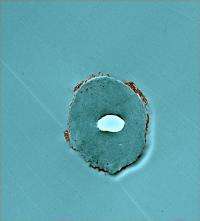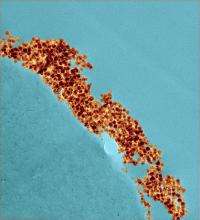Nanotech cotton opens up new possibilities for the fiber -- and its fans

Cotton is going high-tech in New Orleans, La., where a team of U.S. Department of Agriculture (USDA) scientists is continuing a long tradition of innovative research on the prized natural fiber.
Starting in the 1950s, chemist Ruth Benerito and her colleagues at the Agricultural Research Service (ARS) Southern Regional Research Center in New Orleans conducted groundbreaking studies that gave rise to easy-care, permanent-press clothing and other consumer-friendly improvements that helped cotton better compete with synthetic fibers, like polyester. Today, under the leadership of Brian Condon, the ARS cotton researchers in New Orleans are leveraging the latest developments in nanotechnology to bring cotton fully into the 21st century.
ARS is the chief intramural scientific research agency of USDA.
In one ongoing project, the researchers have teamed with Texas A&M University scientists to evaluate a first-of-its-kind, environmentally friendly flame-retardant for cotton apparel and durable goods. Halogenated flame retardants have been among the most widely used chemical treatments, but there's been a push to find alternatives that are more benign and that won't cause treated fabric to stiffen, according to Condon.

Made of water-soluble polymers, 50- to 100-nanometer clay particles and other "green" ingredients, the experimental fabric treatment reacts to open flame by rapidly forming a swollen charred surface layer. This stops the flame from reaching underlying or adjacent fibers in a process known as "intumescence," notes Condon, co-author of a May 2010 ACS Nano paper.
Early trials of the nanocoating using standard flame-resistance tests have been promising. In one case, 95 percent of treated cotton fabric remained intact after exposure to flame versus complete destruction of untreated fabric used for comparison.
In another project, the ARS scientists are generating ultrasonic fields of mechanical energy to improve enzyme-based processing of raw ("greige") cotton to strip away waxes and other fiber components that can hinder subsequent dying procedures and diminish product quality.
More information: Read more about this research in the April 2012 issue of Agricultural Research magazine.
Provided by USDA Agricultural Research Service
















